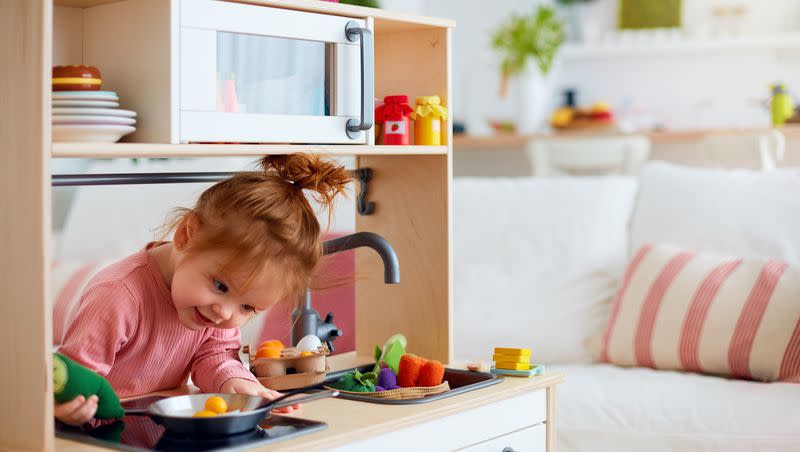Toy foods reflect our increasingly diverse nation

My children are the product of a Palestinian father and a well-traveled American Israeli mother; we live in immigrant-heavy South Florida where we have friends from places around the world — Latin America, Korea, Japan and Jamaica, to name a few. So I was delighted when my daughter received a wooden sushi set — complete with chopsticks — for her birthday one year and a Little Passports Food Around the World International Meal kit the next.
As it turns out, this is an increasingly widespread experience across America — from pho to tacos to crepes, toy companies are catching on to the nation’s increasing diversity and offering choices that better reflect the country’s changing demographics, Christina Morales reports for The New York Times.
While these toys can help acquaint children with new dishes, to broaden a child’s palate, you have to actually put those foods on the table, Deena Weisberg, a professor of psychological and brain sciences, told the Times. However, plastic or wooden versions of unfamiliar cuisine can help prepare kids for encountering the real thing elsewhere. International food toys can also “help them make sense of their world,” writes Morales.
Related
Indeed, such toys have become talking points for us at home. We head to the map or globe and find the places where such dishes are commonly eaten and, if I’ve traveled to the country, I share some memories or experiences from those locales. I usually take care, too, to mention the dominant religion. If there is food associated with the region’s religious holidays, I’ll make that connection, too.
The expanded menu of toy foods available to families fits in well with the idea that America is no longer a “melting pot” but a “potluck nation,” as Eboo Patel of Interfaith America wrote for Deseret.
“Potlucks are civic spaces that both embody and celebrate pluralism. They rely on the contributions of a diverse community. If people don’t bring an offering, the potluck doesn’t exist. If everyone brings the same thing, the potluck is boring,” Patel said.
But there are limits to these toys. Many Latino families don’t eat tacos, as one mother pointed out in the Times. And I’ve yet to see a reflection of my children’s Arab heritage in the form of, say, plastic falafel or ma’amoul, the stuffed cookies enjoyed during the Eid holiday that comes after Ramadan. (But, as it turns out, there is indeed play pita, kebabs, and tabbouleh available; I’m sure the rest isn’t far behind).
In the meantime, my daughter is currently going through an obsession with all things Asian. Was it the Pokemon craze that sparked it, the sushi kit, or the dim sum toys she picked out at Five Below? I’m not sure, but every time she asks for noodles, I oblige her — complete with chopsticks.

